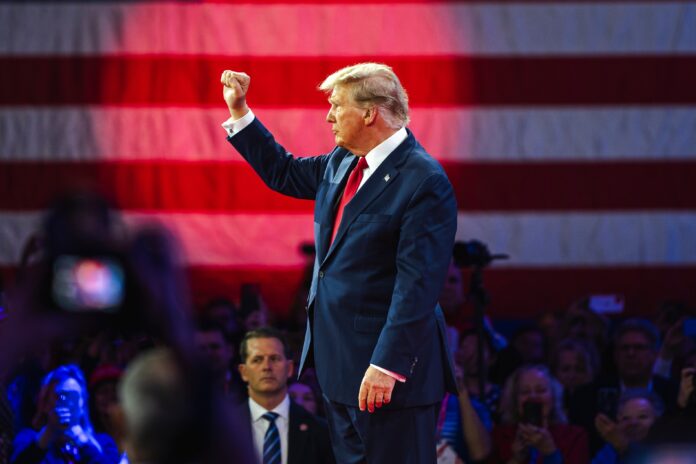US President Donald Trump signed an aggressive “Reciprocal Tariff” policy on Wednesday, escalating tensions and increasing the likelihood of a trade war that could slow global economic growth.
Amid rising uncertainty, gold prices surged near record highs, reaching USD 3,133 per ounce, reaffirming its status as a safe-haven asset in response to falling US stock prices and a weakening US dollar.
Trump, declaring that he was “finally putting America first,” introduced baseline tariffs that impose a minimum 10 percent tax on imports, with rates increasing depending on how the White House evaluates the trade barriers and tariffs other countries impose on US exports. According to Trump’s list, tariffs on goods imported from Europe will be set at 20 percent, from China at 34 percent, from Vietnam at 46 percent, from Thailand at 36 percent, from Taiwan at 32 percent, from Japan at 24 percent, and from India at 26 percent, among others.
“It’s going to be a day that hopefully you’re going to look back on in years to come and say: ‘You know, he was right. This has turned out to be one of the most important days in the history of our country,’” Trump said.
European Central Bank President Christine Lagarde warned that the tariffs would have a “negative impact worldwide” and could undermine global growth.
Trump had previously announced tariffs on imports from China, Canada, and Mexico, along with a 25 percent duty on auto imports. With the reciprocal tariffs, imports from China will face a 54 percent tax starting on April 9, in addition to the existing 20 percent tariff on Chinese goods.
The Trump administration also announced that Canada and Mexico would be exempt from the baseline 10 percent tariff rate for now. These tariffs would only apply once the 25 percent duties imposed on imports from these countries are either terminated or suspended.
Trump’s initial tariff plans already sparked counter measures EU and China, and this latest announcement announcement could further fuel the emerging trade war.







